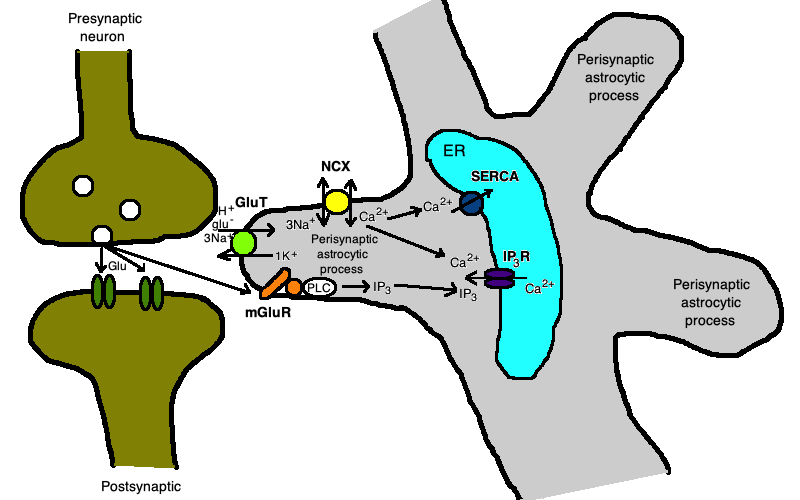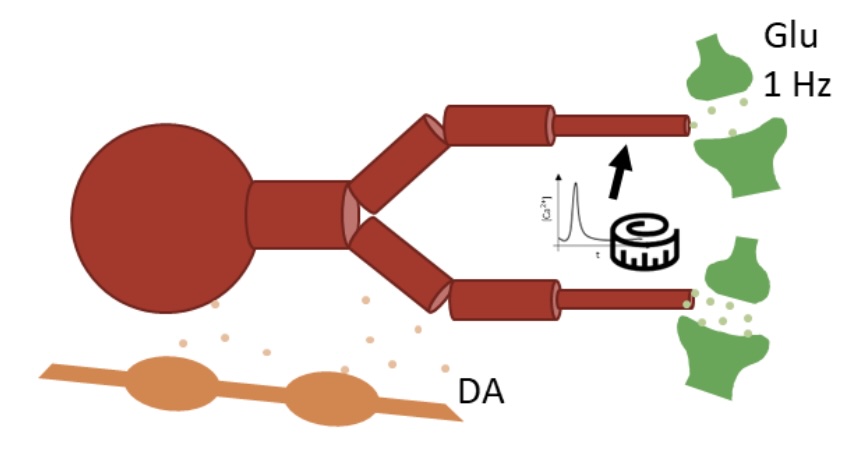Spontaneous Neural Activity in Cortical Network Models
The cerebral cortex exhibits spontaneous activity even in the absence of external stimuli, driven by the dynamic interaction between excitatory and inhibitory neurons. This intrinsic activity plays a key role in processes such as memory consolidation, sensory processing, and the regulation of behavioral states — and it varies depending on the brain state.
During wakefulness, neurons tend to fire asynchronously and irregularly, while extracellular field potentials show high-frequency, low-amplitude patterns. In contrast, during slow-wave sleep, neuronal firing alternates between active and silent periods, producing slow, high-amplitude oscillations.
In our lab, we simulate these activity patterns using computational models of cortical networks with varying degrees of biophysical and anatomical detail. Our goal is to uncover the physiological and network-level mechanisms that give rise to spontaneous cortical dynamics across different brain states.


Modeling Astrocytes and Neuron–Astrocyte Networks
Astrocytes are essential regulators of the central nervous system, playing a key role in modulating synaptic transmission, neural plasticity, and cognitive functions. They interact with neurons through tripartite synapses, which mediate localized cellular activation, as well as through neuromodulators capable of inducing more global astrocytic responses.
To better understand these mechanisms, we develop computational models of astrocytes and their interactions with neural networks. Our research focuses on how these dynamics influence working memory under both healthy and pathological conditions.


Collaborative Research
In addition to SisNe’s core research areas, we actively collaborate with national and international research groups. These collaborations cover a range of topics, including modeling critical behavior in the brain, biophysically detailed modeling of individual neurons, and the development of early assessment systems for individuals with Parkinson’s disease.